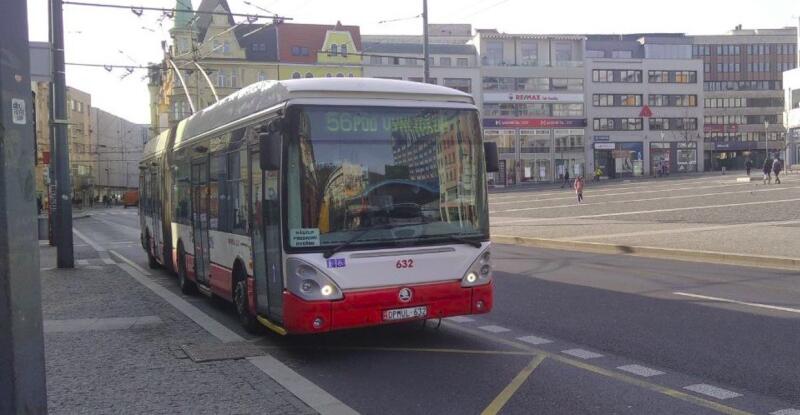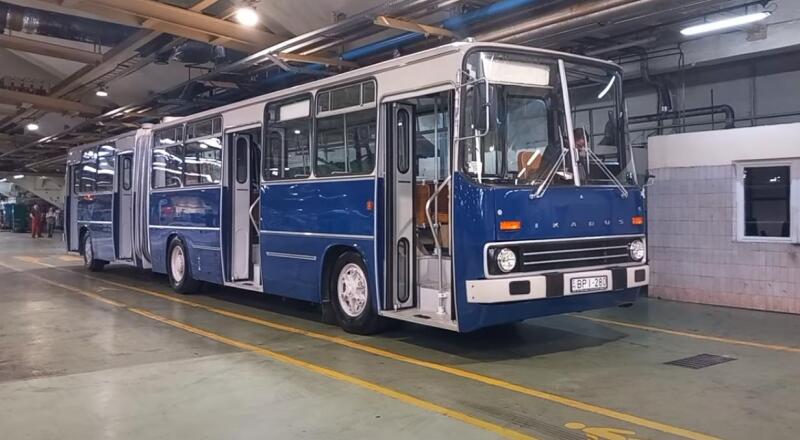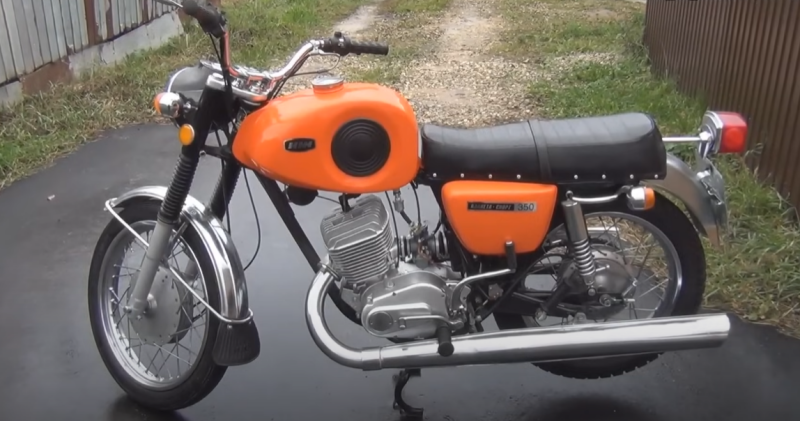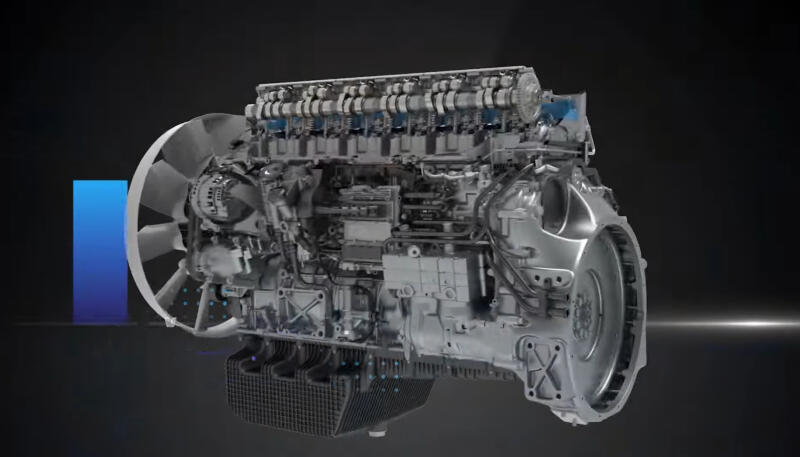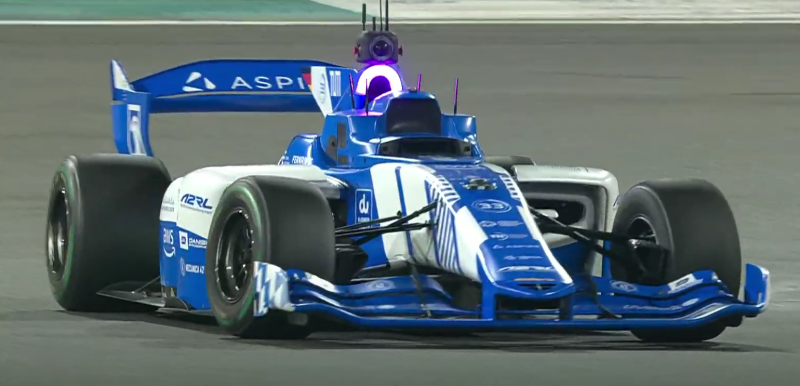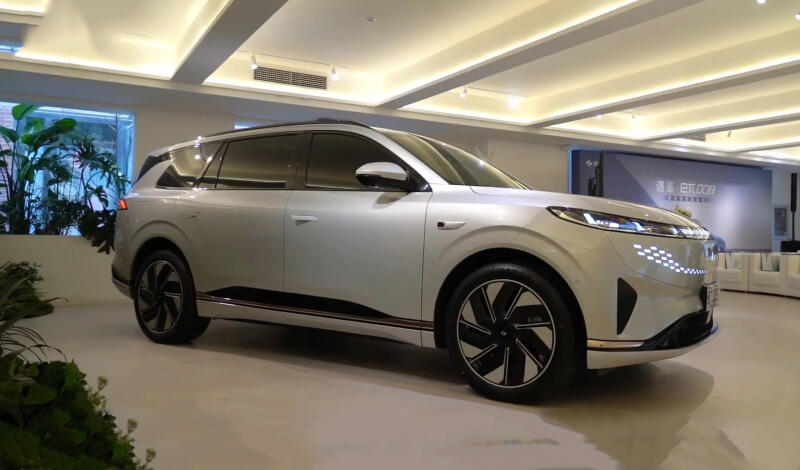Yet, first of all, we are familiar with cars and high-speed locomotives, which were supplied in large numbers both to the USSR and the Russian Federation. But the situation changed very much in the early 90s. Many economic ties collapsed and the types of transport that were previously in demand turned out to be no longer needed by anyone.
 Skoda Tr25 is an articulated trolleybus. Photo by the author
Skoda Tr25 is an articulated trolleybus. Photo by the authorFortunately, new opportunities also opened up. Thus, modern trams and other equipment appeared under the name of the popular Skoda brand. The product range was constantly expanding, including trolleybuses. Urban electric vehicles are most widespread in their homeland, but they are often exported to other European countries.
Based on the design of the solo version
The fact that the Czech manufacturer had a long and very positive experience in producing buses did not mean success in the field of trolleybus construction (although there were positive examples in the past). The company had to be convinced of this after a number of failures of a similar transformation with the “eleventh” and “seventeenth” models. As a result, there was an understanding that it was impossible to do without outside help.
In creating the next version of electric transport, they enlisted the support of the international Irisbus, using the body from the bus model of this company - Citybus 12M. Now the Czechs were waiting for success, resulting in the Skoda Tr24 trolleybus. Although it had three doors at once, it was single-body, therefore, limited in interior capacity.
For this reason, the new Skoda Tr25 model appeared very soon. This is a two-link low-floor trolleybus, created on the basis of the above-mentioned “twenty-four”. The manufacturer again used a bus body from Irisbus (Citelis 18M). The prototype was presented to the public in mid-summer 2004; it was equipped with a 100 kW Kirsha diesel generator.
Further tests of the new product took place in a number of cities in the country with trolleybus service. The first was nearby Pilsen, where the prototype went immediately after its presentation in July 2004. It underwent thorough checks for three months, and later lines from other places joined:
✅ Usti nad Labem – October/December 2004
✅ Ceske Budejovice – January 2005
✅ Brno – January/February 2005
✅ Zlín – February 2005
Many months of testing, which were successful, allowed us to recommend the model for a trial launch into production. The first Brno prototype was in operation for almost a decade and a half and was withdrawn from it only in November 2019. All other Skoda Tr25 units on the lines of this city also began to go into storage en masse from the end of 2021. This is due to the renewal of the rolling stock due to improved Skoda Tr27 models. But their use continues successfully in other places.
Technical side of Skoda Tr25
The body, obtained from an international bus holding company, has a self-supporting structure. It is equipped with four double doors. Each of them received a low entrance, which improved the ergonomics of the cabin and the landing on the platforms.
 The seats are not very soft, but quite comfortable. Photo by the author
The seats are not very soft, but quite comfortable. Photo by the authorThe manufacturer did not stop there, adding the function of lowering the seat edge according to the roll type, creating the possibility of comfortable entry or exit for passengers with limited mobility. In addition, the Skoda Tr25 is equipped with:
✅ disc brakes with ABS system
✅ automatic parking brake
✅ VDO instrument panel in the driver's cabin
Electrical equipment based on IGBT semiconductors is manufactured by Skoda Electric. The trolleybuses are equipped with only one 18ML 3550 K/4 engine with a power of 240 kW, which drives the rear axle. In this case, the power plant is located diagonally behind it.
The transfer of driving force to the road through only one axle often reaches its limit, especially when traction is reduced due to adverse weather conditions. This has become a weak point in the design, in many cases resulting in downtime for these vehicles during the winter months.
 Doors with buttons for independent opening. Photo by the author
Doors with buttons for independent opening. Photo by the authorTraction equipment provides recovery until the trolleybus comes to a complete stop. The salon is heated by an electric flow heater, which is used to heat the water. Next, it increases the air temperature in the heating units. This serves three purposes:
✅ for heating the car interior
✅ heating the driver's cabin
✅ windshield defogger
Serial trolleybuses differed markedly from the prototype technology. Over time, the manufacturer resorted to modernizing the model. The differences between the new 1B design and the previously produced 1A are:
✅ front swing axle shaft instead of rigid low-floor rear linkage
✅ different configuration of roof panels
✅ modernized electrical equipment
Four-door trolleybuses can accommodate 110 passengers, of which 40 are seated and the remaining 70 are standing. There are rear viewing mirrors in the interior of the second, third and fourth doors so that the driver can better see the change of passengers. The salons are equipped with large sliding windows, which is especially pleasant on summer days. All Skoda Tr25 are equipped with the BUSE information system and have ESKO/LEKOV pantographs. Here are their indicators:
✅ width - 2,5 m
✅ weight – about 18 t
✅ maximum speed - 65 km / h
At the request of the customer, a diesel generator is installed in the Skoda Tr25 so that the trolleybus can travel to places not equipped with lines. The autonomous unit is located in the rear. The speed of movement with different power systems of the vehicle remains unchanged.
 After the upgrade, USB connectors for charging appeared. Photo by the author
After the upgrade, USB connectors for charging appeared. Photo by the authorThe same trolleybus model has taken root in the Slovak capital. The first of them were delivered to Bratislava by rail at the beginning of 2006. After the Skoda Tr25 passed tests to meet government requirements, further deliveries continued. In total, the neighboring country purchased six samples of such equipment.
The second Slovak city to purchase the Skoda Tr25 was Presov with a population of 85. From a technical point of view, the Tr25 trolleybuses underwent certain changes during operation, and individual copies began to differ from each other in detail.
Completion of production
Gradually, some of them began to install newer air conditioning in the driver's compartment or headlights with Hella LED technology. During use, sometimes there were problems with attaching the front part of the roof railing. This caused the short-term operation of several copies without this part. The next weak point was the rear axles, which had to be replaced frequently.
 Skoda Tr25 on the streets of Ústí nad Labem. Photo by the author
Skoda Tr25 on the streets of Ústí nad Labem. Photo by the authorProduction of the Skoda Tr25 continued until 2014, after which it finally ended. During this time, the company mastered the production of more modern models, which replaced it on the assembly line. Thus, the 18-meter trolleybus was assembled in the amount of 78 copies.
